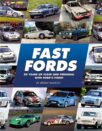
By Tony Bagnall
2023 review by James Loveridge
As in most of life there are niches and this includes motoring history. One such niche has been comprehensively filled by Tony Bagnall in his book “What happened to the class of 1955? The story of the 1955 British Grand Prix and the participating teams”.
This event was, of course, of particular significance for British motor sport as it was the first time the British Grand Prix had been won by a British driver since Richard Shuttleworth at Donington in 1935. As Tony says it was not a particularly interesting race, dominated as it was by the Mercedes team who took the first four places, but what was thrilling, however, was Stirling Moss beating Juan Manuel Fangio by 0.2 seconds.
In this 152-page book we are given a brief history of the evolution of Grand Prix racing from 1946 up to 1955, a brief description of the race itself (fuller details can, of course be got from Autosport or other magazines of the time) and then the stories of the various cars and drivers who took part.
The day’s programme consisted of three races: 500cc (sometimes called Formula 3), Sports Cars and the Formula 1 Grand Prix. It is rather encouraging to note that, in the Grand Prix and out of the dozens of makes and teams who have participated over that period, Ferrari, Mercedes and, if only in name, Aston Martin are still competing. Maserati, from which there were four cars competing, are still making exciting cars. Of the other one-time F1 makes represented that day only Jaguar, which came fifth in the over-2,600cc Sports Car race and Lotus who won the up-to-1,500cc part are still extant. Noteworthy is that some of the sports-car drivers also drove in the Grand Prix – the top drivers were versatile in those days.
The records of all the competing makes are summarised but the meat of the book is the histories of the twenty-five drivers who drove or who were down to drive. Sadly, one of the two who were still alive when the book was written, Kenneth McAlpine, has died so the only survivor is Hermano de Silva Ramos. McAlpine was driving a Connaught, another promising make hampered by lack of finance. The other British makes did not distinguish themselves either: the BRM was a no-show and both Vanwall and Cooper were yet to gain the massive success they both later achieved.
Quite clearly a great deal of research has gone into the compilation of this book, reflecting Tony’s obvious deep interest in the sport. One result is that we have an easily accessible compilation of the careers of some of the outstanding drivers of the time. Some revealing aspects are given, such as Peter Collins handing over his Ferrari during the 1956 Italian Grand Prix to Fangio and thus denying himself the chance to become World Champion by ONE point. Even if it was team orders, can you see today’s prima donnas doing that?
Also included is a useful summary of the history of the Aintree motor race circuit and the technical specifications of the cars entered. These show how far ahead Mercedes were of the others, with at least 30 more horsepower than engines of similar sizes, and this was well and truly demonstrated on the race track.
The book is very well illustrated and the providers of the many photographs are fully attributed. What is vividly shown is the progress that has been made to enhance the performance of Formula 1 cars but, some may say, at the cost of aesthetics. In those days you didn’t have to be an expert to distinguish one make from another and you didn’t have to keep up to date with the periodic changes in liveries.
This book is issued as a numbered limited edition of 200 and is an extremely worthwhile acquisition. It can be acquired direct from the publisher.
Publisher: Douglas Loveridge Publications, Moss View, 85 Warburton, Emley, Yorkshire, HD8 9QP
Price: £30.00 plus p & p.
Description: 152 pages, hardback with illustrated covers. 170mm x 120mm. Profusely illustrated.







Leave a Comment